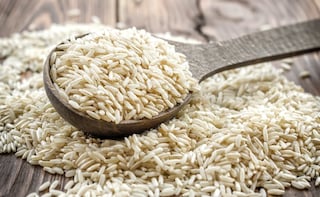Researchers from Indira Gandhi Agriculture University (IGAU), Raipur have developed zinc-enriched rice that’s expected to play a crucial role in fighting malnutrition in tribal-dominated Chhattisgarh where nearly seven lakh children are still malnourished. The new paddy seed, called 'Chhattisgarh Zinc Rice-1' is the first zinc bio-fortified rice variety in India. It was launched by the State Variety Release Committee in March and its production is likely to begin from the next kharif season.
For the latest food news, health tips and recipes, like us on Facebook or follow us on Twitter and YouTube.
Advertisement
Tags:
